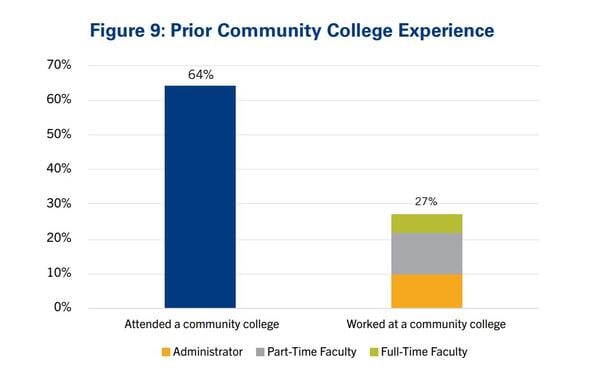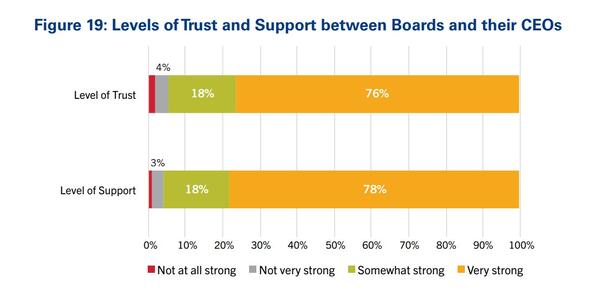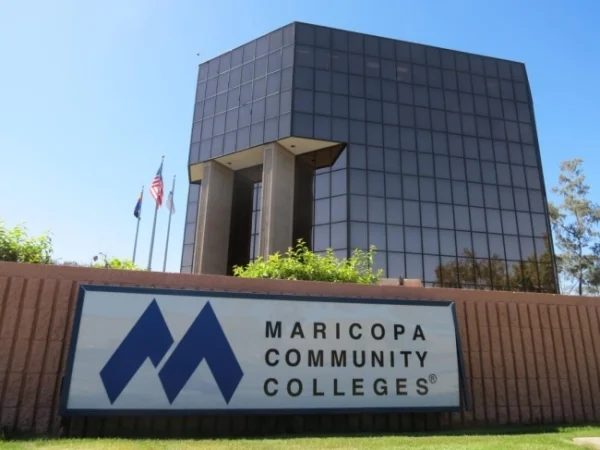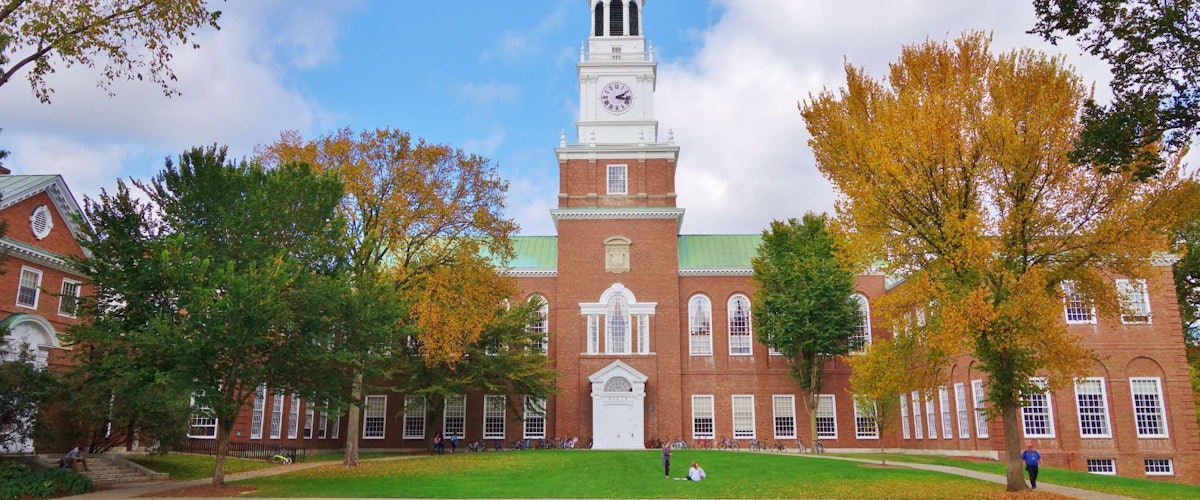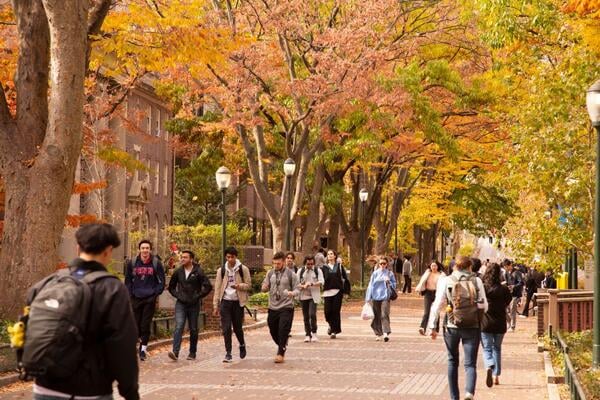Declining student numbers, funding reductions, rising personnel costs and policy changes at the state and federal level pose the biggest financial risks to institutions, according to Inside Higher Ed’s recent annual survey of chief business officers with Hanover Research. Those issues are consistent with an overall threat to higher education: that federal policy and economic uncertainty are stressing a sector already teetering on enrollment and demand cliffs.
Yet underneath those challenges lies another, less headline-grabbing danger: delayed upkeep and repairs to infrastructure and assets.
More on the Survey
Inside Higher Ed’s 15th annual Survey of College and University Chief Business Officers was conducted by Hanover Research. The survey included 169 chief business officers, mostly from public and private nonprofit institutions, for a margin of error of 7 percent. The response rate was 7 percent. A copy of the free report can be downloaded here.
On Wednesday, Aug. 20, at 2 p.m. Eastern, Inside Higher Ed will present a free webcast to discuss the results of the survey, with experts who can answer your most pressing questions about higher education finance—including how to plan effectively amid the current financial and policy uncertainty. Register here.
One in three surveyed CBOs (36 percent) identified infrastructure/deferred maintenance costs as a top financial risk to their institution, just behind state and/or federal policy changes—and ahead of options such as technology investment requirements, increased market competition (including from alternative credential providers), potential changes to international student enrollment and changes in student athletics revenue and name, image and likeness deals.
Most CBOs also say they’re at least moderately concerned about their institution’s ability to fund deferred maintenance and facility needs, with 11 percent extremely concerned and another quarter (25 percent) very concerned.
How bad is the problem? Just 1 percent of institutions represented were on track to fund no deferred maintenance in the then-current fiscal year (the survey was live in April and May). But another 63 percent were only poised to fund up to a quarter of identified needs. This is consistent across public and private nonprofit institutions.
By institution type, public doctoral university CBOs were most likely to report funding a quarter or less, at 89 percent. Community college CBOs were least likely to report this, at 44 percent. Still, just about a third of community college CBOs expected their institution to fund more than half of identified needs.
Across higher education, deferred maintenance needs span aging HVAC systems, roofs and dorms; buildings in need of rewiring; and more. Technical deferred maintenance, such as addressing choppy Wi-Fi, is another concern. These aren’t the flashy projects that attract donors or drive capital campaigns (exceptions notwithstanding). But they matter in terms of curb appeal and functionality. Prospective students notice the state of facilities. Dingy classrooms and buildings are current students’ learning and living conditions, and employees’ working conditions. Deferred maintenance may translate to safety or accessibility issues (think sidewalks and elevators). And problems only compound over time, meaning deferred maintenance can—and does—escalate to larger, costlier repairs.
Richard G. Mills Jr., president and CEO of United Educators, a liability insurance and risk management services provider, said that underfunding depreciation has “long been in the bag of tools that institutions will turn to in times of financial stress.” It’s never been a “great practice,” he continued, “but I understand why it happens, and there is even an argument that in the past era of growth—in endowments, tuition, philanthropy and student population—it wasn’t an outlandish way to approach what were largely temporary downturns.”
Now all that has changed, said Mills, a former college chief administrative, business and operating officer: “The forward environment is unlikely to be one of growth,” with philanthropy, tuition revenue and student populations “certain to remain flat or decline for some time.”
In this light, using deferred maintenance as a tool is simply delaying an expense whose cost is likely to compound at a significant rate, he added.
Ruth Johnston, vice president of consulting for the National Association of College and University Business Officers, agreed that deferred maintenance “is a very big and growing issue for universities and colleges and has been for many years.”
Public colleges and universities are often hardest hit, Johnston said, as state legislators “prefer to fund new capital projects over providing funds for the less glamorous options of deferred maintenance.” And unless universities and colleges “intentionally create budgets, and consistently add funds to them, they don’t prioritize deferred maintenance and often only pay for emergency needs.”
The shiny-object phenomenon isn’t exclusive to public institutions. Mills recalled, for example, how a dean at a private institution once said he wasn’t worried about underfunding because when major renewal was required, “he would simply run a capital campaign to build a new building.”
In addition to the findings on deferred maintenance, the survey also suggests that some institutions are rethinking their physical campuses amid shifting enrollment and study trends. About two in five respondents (41 percent) report that their institution is retaining its current physical campus footprint but investing in renovations. Another 34 percent report targeted expansion, or moderate growth in specific areas. But relatively few CBOs report either strategic downsizing or significant expansion.
Deferred maintenance expenses can sometimes be bundled into other project budgets. But uncertainty and other factors are slowing or halting even capital spending on many campuses—even if strategic downsizing isn’t yet a major trend.
Seth Odell, founder of Kanahoma, an education marketing agency, underscored the gravity of the deferred maintenance backlog, saying it “feels like it’s a part of a broader death spiral many institutions have found themselves in.”
“We often treat deferred maintenance as a facilities or finance issue, but it’s increasingly a strategic enrollment risk—and one that’s compounding year over year,” he said. “I’ve worked with institutions where students are literally walking past shuttered buildings on campus tours, or sweating through admitted-student events due to outdated HVAC systems. In a competitive enrollment environment, these realities are no longer just aesthetic. They’re affecting yield.”
Compounding Problems, (Radical) Solutions
Even before it downgraded its higher education outlook in March due to federal policy uncertainty, Moody’s Ratings had warned that a “large and growing backlog of capital needs posed a significant credit risk for the higher education sector.” In a report last summer, Moody’s said that $750 billion to $950 billion of spending would be needed over the next decade for just its approximately 500 rated colleges and universities to make “significant headway toward reducing deferred maintenance, upgrading facilities and building the new projects that are critical to strategic positioning.”
“Colleges and universities that are unable to offer updated facilities, advanced technology and an attractive physical environment risk losing competitive standing,” Moody’s said at the time.
Construction cost data firm Gordian documented in its most recent “State of Facilities in Higher Education” report “ongoing curtailment of campus expansions as institutions take stock of what they will really need to own and operate,” plus shortfalls in the funding of needed campus renewal investments of more than 32 percent. It valued the backlog of capital renewal needs at over $140 per gross square foot.
The situation isn’t likely to improve anytime soon. Emily Raimes, associate managing director at Moody’s, told Inside Higher Ed that amid growing economic and policy uncertainty, “many institutions are adopting a more cautious approach to financial planning. This shift in strategy may lead to a deceleration or postponement of capital investment initiatives.”
Shrinking the footprint of a college campus is a real opportunity for colleges and universities to move forward and save money.”
—Consultant John Woell
F. King Alexander, who served as president of Louisiana State University from 2013 to 2020, said that deferred maintenance needs increased $30 million per year at the Baton Rouge campus alone during his tenure. The university “cobbled” together only about $8 to $10 million annually to address emergency issues, he said, so the problem still grew by about $20 million annually “despite what we were able to do.”
“We used a lot of duct tape,” he said.
Louisiana last year passed legislation designed to fund deferred maintenance and capital improvements at state institutions. It will take years and consistent support to tackle the state’s $2 billion backlog.
Alexander, now a professor of educational leadership at Florida Gulf Coast University, is currently involved in an ongoing national study that draws on the insights of chief community college financial officers. Based on that research, completed with colleagues at the University of Alabama’s Education Policy Center, only “marginal” progress has been made in facilities since 2007, as institutions “still have the same needs, the same backlogs, the same increases in maintenance and the same lack of planning,” he said. In 2024, the largest areas of deferred maintenance and facility problems for community colleges included science labs, classroom spaces and computer labs.
“States have consistently shifted their deferred maintenance costs from state government to the public colleges and universities over the last three decades,” Alexander said. “In other words, to student tuition and fees.”
Odell described deferred maintenance as “both a symptom and an accelerant of the bigger financial reckoning” now facing higher education.
For tuition-dependent institutions especially, he added, “it’s a vicious cycle. Declining enrollment leads to reduced revenue, which leads to deferred investments, which in turn erode the very experience that drives enrollment.”
Odell did note some “success stories,” including Southern New Hampshire University, which has been able to work somewhat in reverse, “using surplus generated from online enrollment growth to completely revamp and reimagine their campus experience.”
Among other strategies, the consultancy EAB recommends that campus leaders create maintenance endowments that will support a building’s “true needs” across its life cycle—not just construction.
John Woell, principal at Manitou Passage Consultancy, offered his own suite of suggestions—some of them unconventional: replacing faculty and staff offices with more flexible workspace arrangements, known as “hoteling”; being clear about needs, including how each campus space supports the college’s mission; and ending gifts in perpetuity by pivoting to “sponsorships.”
“If a gift pays to build a space that has a likely useful life span of 50 years, allow renaming at the end of the 50 years.”
Bigger picture, Woell said, “Shrinking the footprint of a college campus is a real opportunity for colleges and universities to move forward and save money.”
Alexander agreed that campus-based solutions such as rethinking physical spaces and even downsizing make sense where enrollment is not growing. But he stressed the importance of public investment in higher education—including more reliable state funding for deferred maintenance expenses at public institutions.
“This is a huge issue that presidents have to deal with that nobody’s talking about.”
